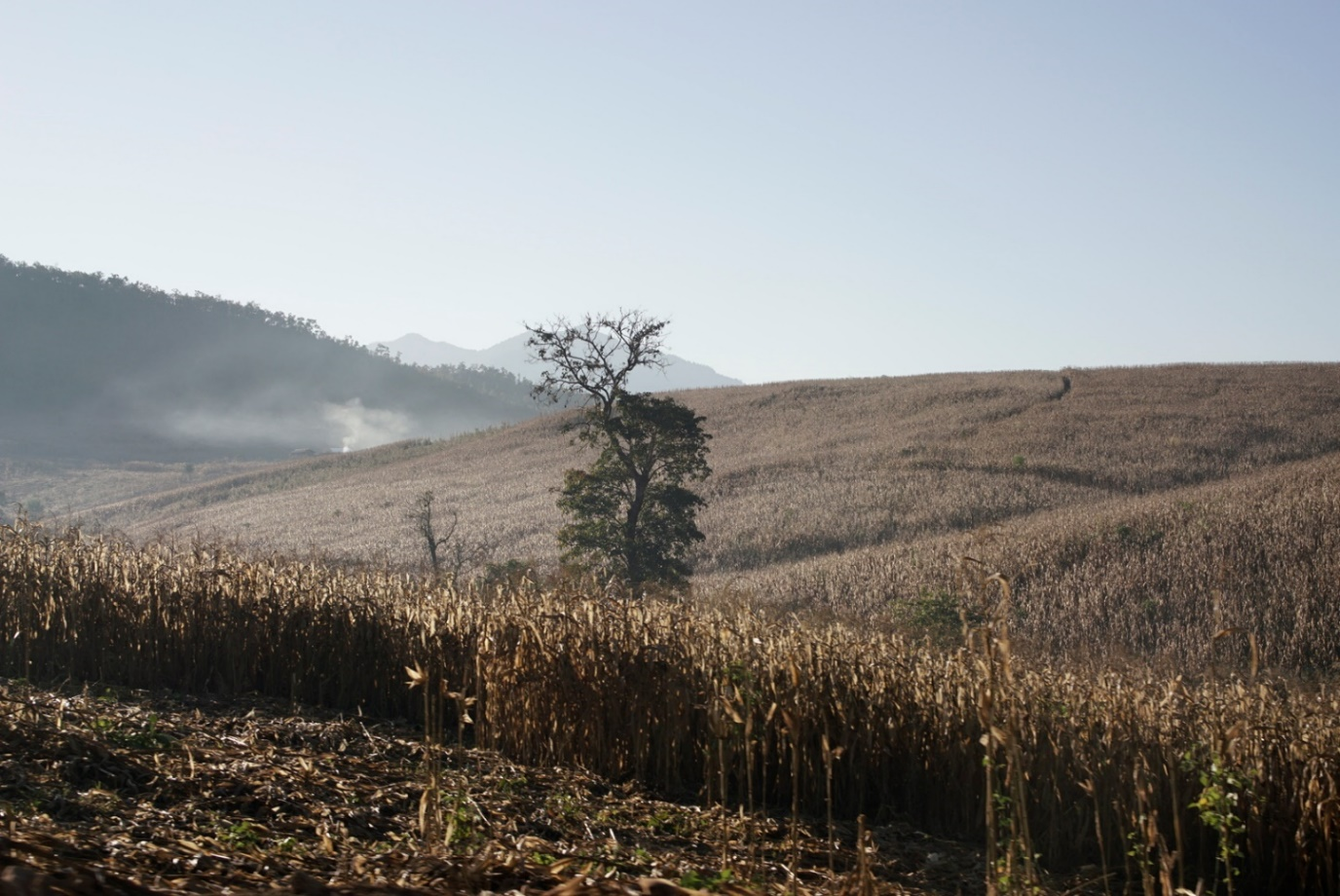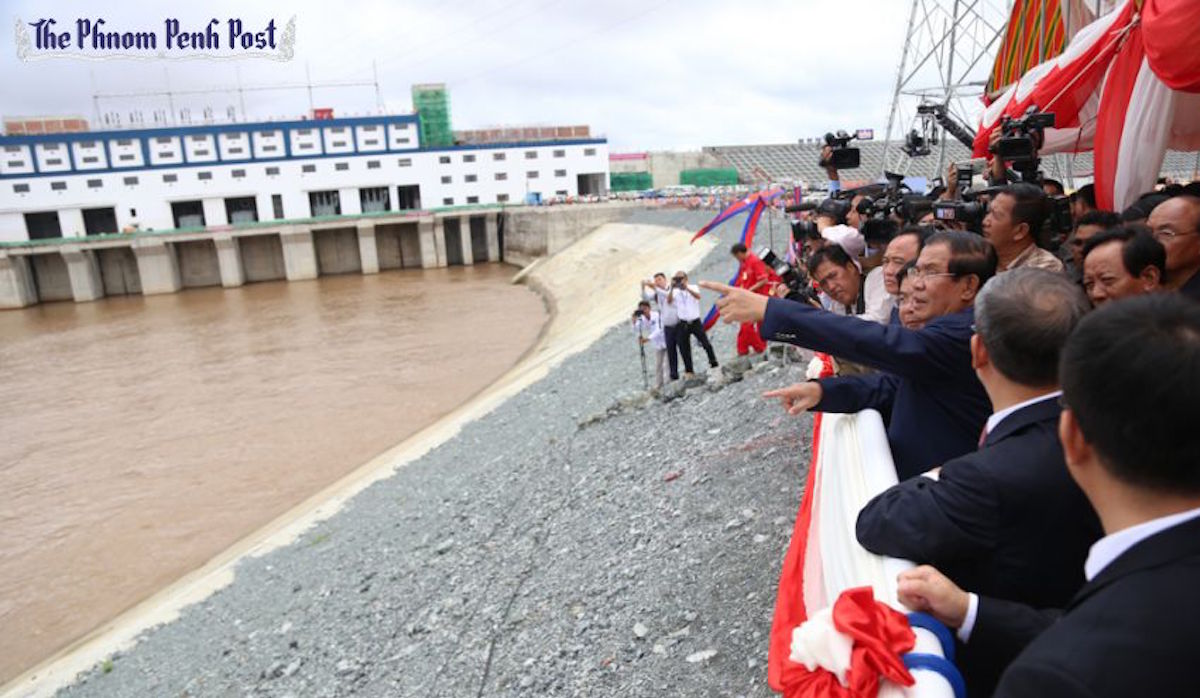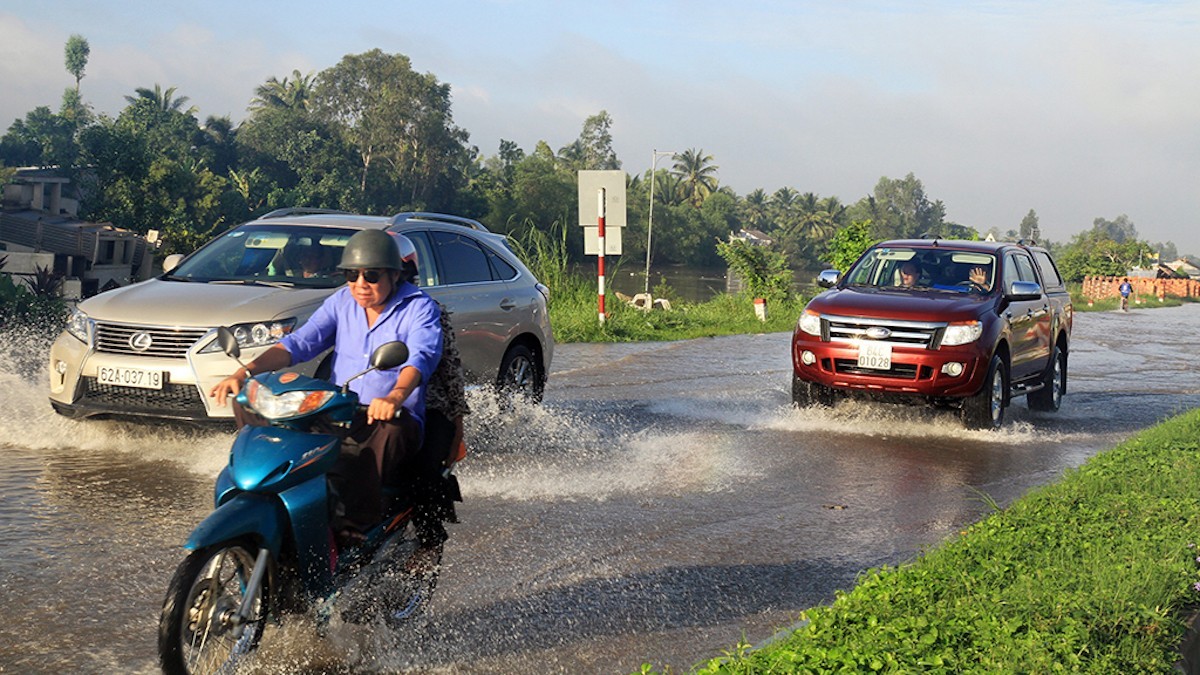As new development overwhelms Phnom Penh’s aging wastewater management system, the Cambodian capital seeks an ambitious remake.
Home to poor fish farmers who earn their living on the water, the boats had found refuge from a river sludge in the shadow of a city that’s in the throes of rapid and continually accelerating development — with little regard for the negative consequences borne largely by the poorest residents. As they waited for the sludge to clear, local officials denied that sewage overflow had caused a fish die-off. They instead blamed, variously, climate change causing the water to become too hot and heavy rain, claims unconvincing to residents.
“The sewage water made the fish die,” said 49-year-old Ming Tiv Bo, pointing to a blue container floating near her houseboat in May. “All the fish inside the barrels, all the fish died.”
Bo and other fish farmers had experienced the sludge before. Ly Chhun Leng lives next to a blackened canal upriver from where the fish deaths occurred. She says the amount of sewage pumped into the slow-moving water led her community to give up fishing altogether. “It always happens, every year,” she says.
But mass fish die-offs of the scale this past spring are unusual — and a frightening preview of the future to come if Phnom Penh continues to grow without remaking its 60-year-old water management system amid spiraling population growth.
“It’s a very critical situation now,” says Nishikawa Masashi, a project adviser at the Japan International Cooperation Agency (JICA), the Japanese government’s international aid and development agency and the lead force behind a new $1 billion proposal to adapt Cambodia’s wastewater management system to meet the dual challenges of rapid urbanization and climate change.
For more background: City’s sewage plans mooted and Sewage Overflow Hits Environment Ministry’s New Expensive Offices





